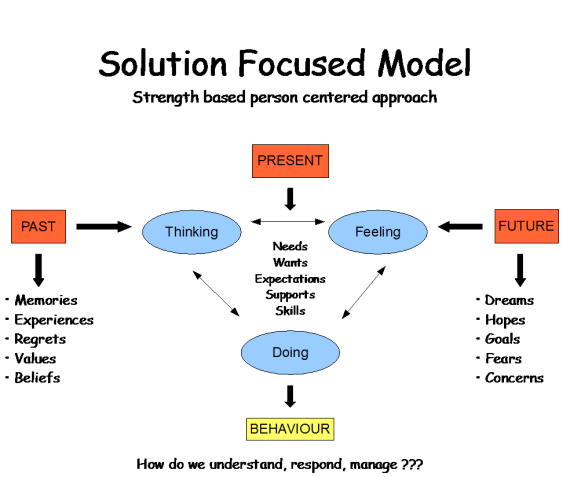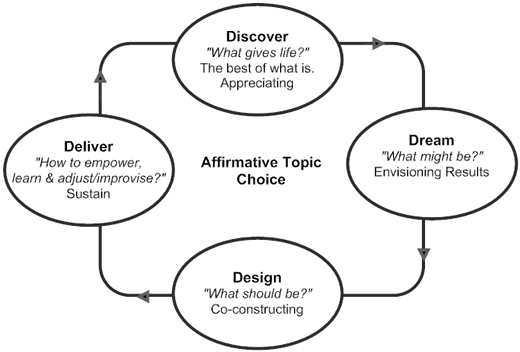Strengths Based Innovation
Finding Your edge to Win @ Work

What does it take for people to stand out at work? How can an organization’s best practices and innovations be shared most effectively? Green Power Guy Anthony De Vito argues that the future of Learning and Development will focus on delivering to each employee only those innovations and techniques that fit his or her particular strengths.
Excellence happens all the time in an organization, but it can be tricky to harness this excellence and make it work for you. So often, when companies try to reproduce what their best performers do differently, the result is just another lifeless policy that ends up constraining people instead of freeing them to do their best work. The trick is to help people put innovative ideas into practice without having them become bogged down in ‘fuzzy’ concepts that end up stifling the personal strengths that give them their edge.

Anthony discusses a customized best practice delivery system for both managers and employees. Using 7 distinct roles to identify each person’s unique combination of strengths, Anthony gives individuals tips and techniques on how to put their particular edge to use. And managers will get lots of raw material to be better coaches based on the specific strengths of their team members. At the end, you will know how to move beyond the one- size-fits-all approach and find those spheres of influence that work best for you. You will better focuses on five core strengths required to win. We are designed to lead in each of these areas.

We are experts at strength-based, high engagement strategy development processes. We enable you and your team to access the collective wisdom of your organization or community in order to develop shared and desired outcomes and strategies for working collaboratively to achieve those goals. Our philosophy is that people commit to what they help create.
It is also in human nature to fix things. We love finding problems so that we could solve them and gaps so that we could fill them. Not only we use this approach with the projects we work on, but we also use this approach in evaluating our employees. After all, it feels natural, it feels right.
And that’s where we go wrong! This approach is the reason some cannot build strong and diverse teams. This approach is the reason we are not utilizing human potential to its fullest. This approach is the reason we have more mediocre managers than we have true leaders. And at the end of the day, all that impacts our culture and ultimately our bottom line.
The simple truth is that if we stop trying to “fix” our employees and rather focus on their strengths and their passions, we can create a fervent army of brand evangelists who, when empowered, could take our brand and our products to a whole new level.
Use Analytics To Better Manage
Over the past several years a number of companies have embraced Strength’s Based Innovation as an approach to evaluating individual employees and team alike. Strength’s Based Innovation is a test and a guide that helps identify team’s top strengths to allow management to tap into the natural talents of its employees. The companies that embrace the mentality of aligning people’s strengths and passions with the right projects and teams get amazing results in both employee brand evangelism and productivity.

Here is the ABC’s of strength-based leadership:
Strength-based leadership is often overlooked. Mostly because “we’ve always done it this way” syndrome. We understood the value of improvement and fierce competition, so it stood reason that we have always tried to change who we are to become, well, “better”. However, if we want to breed more leaders, not more mediocre managers, we need to revisit how we hire people, build and manage teams, and, at times, fire as well. Our approach is to replace Deficit Based Restrictiveness with Strength Based Innovation
Reactive Based: What’s wrong?, solve problems, identify what we need to improve, fill gaps and deficiencies
Strength Based: What is strong?, Work with our existing assets and resources, amplify what works, positive deviations.
Align. Instead of forcing team-members to work on projects that need to be done, ask “Who wants to take on this one?” Look at the skill-sets of your employees, talk to them, and identify the best fit. You might find that someone who isn’t passionate about analytics would trade projects with someone who is and vice versa.
Sometimes it’s as easy as asking. And sometimes you need to reshuffle your team and fill in the gaps. But ultimately, when all the pieces of the puzzle fit well and all the skill-sets are utilized in the way they should be, you end up becoming a better leader and fostering an innovative environment.
Build diverse teams. Diversity of perspective, cultures, passions, ages, genders will help you build some of the most creative and innovative teams around. Building a successful team is like building a puzzle. When all of the pieces fall into place, you end up with a complete picture. Don’t just hire “yes” people, hire those who will be able to bring various strengths to the team, thus creating grounds-breaking thinking. Their success will take your success to new heights.
Building a diverse and complete team is half the battle. The other half is to actually empower them to create art. And that requires risk-taking and unconventional thinking. As a leader you need to allow your teams to be naive, curious, and bold. Even if sometimes it leads to a healthy conflict.
An empowered diverse team usually means strong perspectives and opinions. But that’s okay, because as a leader you can guide your team and their passions in the right direction without dampening their ingenuity and enthusiasm.
Create the culture of transparency. When your team-members trust you, they are open about their passions, motivations, and dreams. And if you listen (not hear, really listen) hey will give you their 110% and more.
Leadership is a privilege, not a right, and we need to treat it as such. Leadership means encouraging people to live up to their fullest potential and find the path they love. That, and only that, will create a strong culture and sustainable levels of innovation.
Case Study: Facebook
is one of those companies. Facebook’s culture and approach to hiring people is non-traditional. Sometimes they find the best talent in the industry and bring people on board without any particular role in mind allowing them to match up their skills with their projects of interest. Every 18 months or so, Facebook engineers are required to rotate and work on something different for a while. This requirement constantly brings new perspectives and experience to the teams and ignites new ideas. But the key is that, in doing so, they don’t force unnatural talent/project pairing.
Facebook also holds hackathons, monthly all-nighters where any idea or project can be brought forth for others to work on. If an employee is passionate about a feature that isn’t currently on the road-map, (s)he can bring it to light and partner with others to get it to the state of usable code. It is considered an intellectual and creative exercise. The company provides food and beer; engineers, their ingenuity. The only rule is that during hackathons, one can work only on someone else’s project. Some of the most popular site features, like chat, video messaging, and Timeline, came out of these all-nighters.
The company encourages its workers to form teams around projects they’re passionate about and have the strongest skill-set, because Facebook’s leaders clearly understand that great work comes out of doing what you love and applying your strengths in creative ways. This also creates a rather flat environment where anyone can be a hero: whether you are a CEO or an intern, if you had the best idea or code, you are celebrated. “Pixels talk,” said Joey Flynn, one of the designers of Timeline. “You can do anything here if you can prove it.”
Case Study: 3M
3M is another company that allows its employees to apply their strengths towards the projects and ideas they are passionate about. We have all heard about companies like Google allowing employees the time and encouragement to create, but it is a little known fact that 3M set the precedent for this practice years before with its “15 percent time,” a program that allows anyone who works at 3M to use a portion of weekly work time to create and develop his or her own ideas. As a matter of fact, the program has produced many of 3M’s best-selling products, including the Post-it note. In 1974, Art Fry, a scientist at 3M, came up with that simple but famous invention.
To inquire about setting up customized training, contact us at: Training@GreenPowerGuy.com

